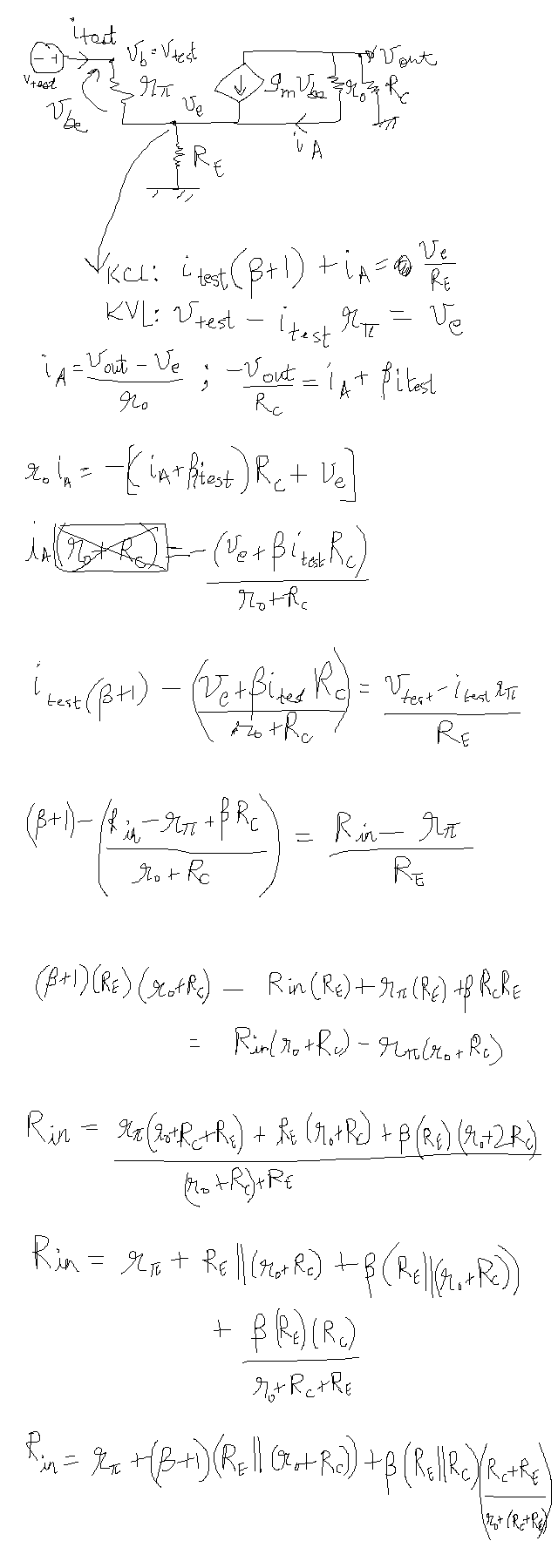The Widlar current source is illustrated below:

simulate this circuit – Schematic created using CircuitLab
The small-signal AC model is shown below:

I know that if the Early voltage is assumed to be infinite, then the input resistance \$R_{in} = r_{\pi} + \left(\beta + 1\right)R\$. But how does it change (or not change) when the Early voltage is taken into account (i.e., when \$r_{o}\$ is not infinitely large?

